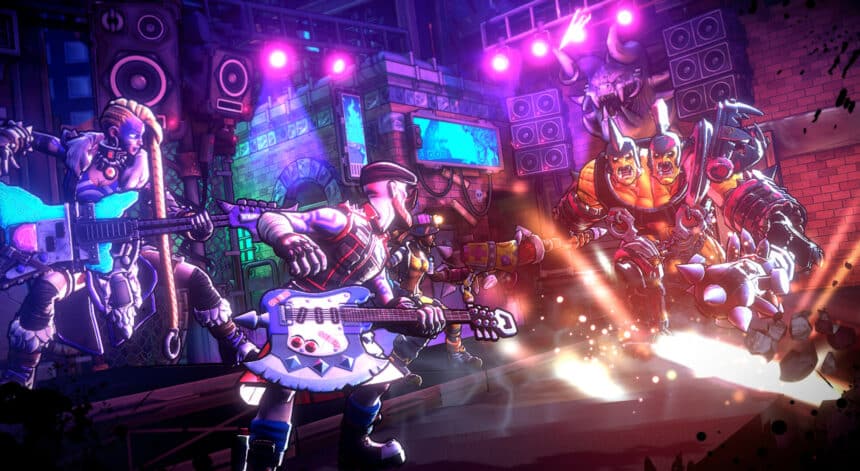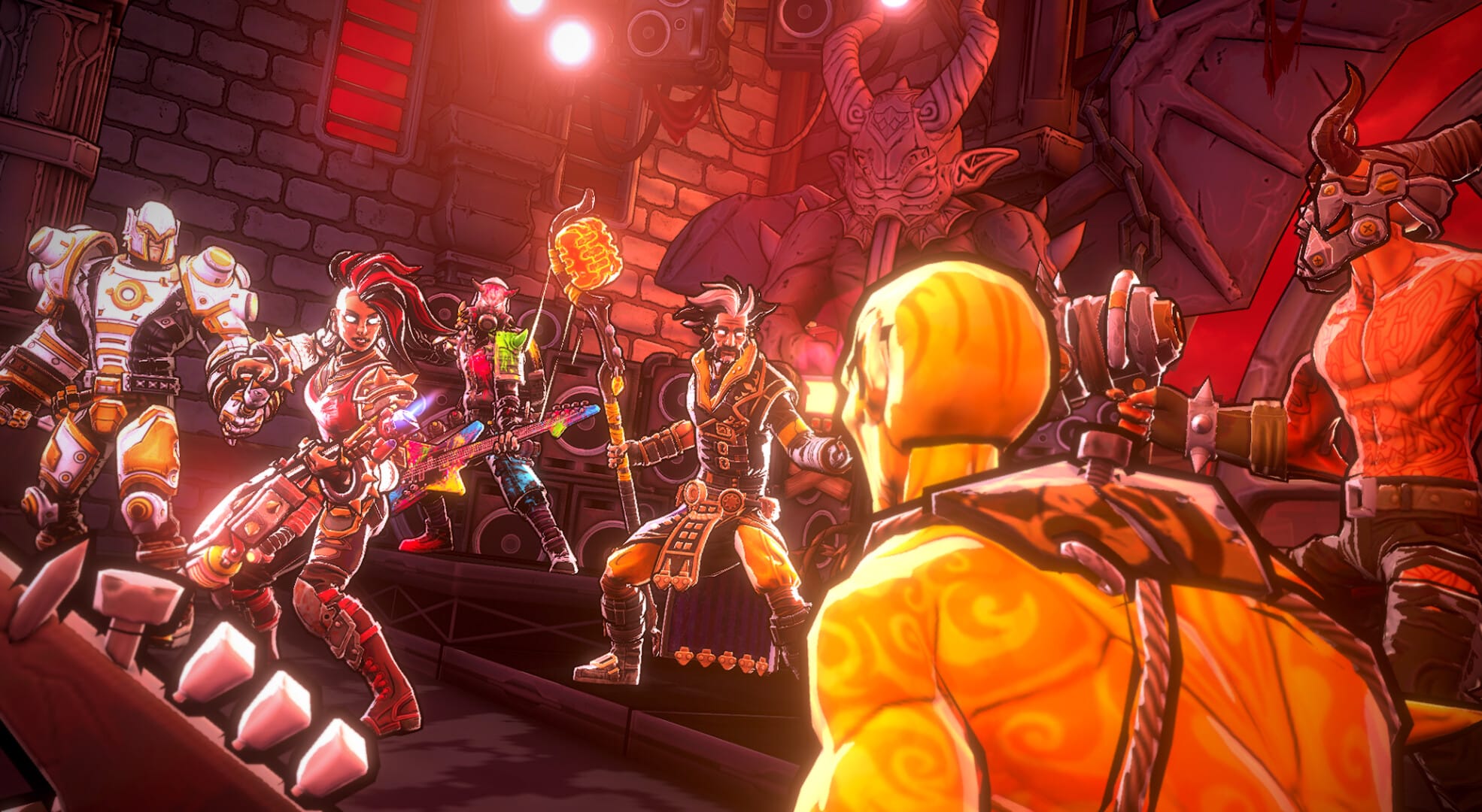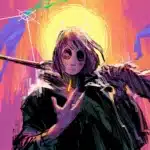There are a lot of rogue-like/lite card games on the market right now, and it takes quite a lot to stand out, especially after titans of the genre like Slay the Spire and Monster Train. Power Chord, a heavy metal-fueled deckbuilder, manages to leave its mark by not being just another rip-off and brings a lot of interesting mechanics to the table with some excellent aesthetics. In my Power Chord review, I’ll take a look at one of the best titles to start off the year.
Gameplay
Power Chord plays a lot like Slay the Spire, apart from a key distinction. Instead of a single character, you’re controlling a party band of four, each with its own role. This might seem like a small addition, but it’s really not and adds a layer of depth because of how many synergies you need to keep track of. For each run, you’ll start off with the base deck and add new cards by going through different nodes on the map. So far, pretty much Slay the Spire, down to treasure rooms, the merchant, and healing spots with a boss at the end of each act.

Each character has a role to play, like, Roxy Cleaver, denoted by a blue color, is on the left-most side of your team. Their job is to reinforce the rest of the band, applying armor whenever necessary, and most of their cards are fueled by how much armor they’ve applied to themselves or other members.

Moving to the right, the next two characters are damage-oriented, and you must figure out how to maximize their output with each turn. In earlier runs, Grimnir will be your main damaging unit. He becomes stronger the more damage he takes due to “Rage”. So, to keep him alive while you make use of him getting damaged as well, you can use Stitch, the healer of the band, to continuously provide him with a few health points during each turn because of her Blood Bag Gear Item.
This mixing of synergies and reliance on each party member is what makes Power Chord such a special experience. It’s addictive and wholly satisfying, with a lot to experiment with, which isn’t all that clear at first. Ideally, you want to build the team around one or two characters. This is because splitting your deck between everyone will make it harder for you to get the necessary cards.

The card variety is great, and certain characters use stances too, which can further help decide how you want to synergize the band’s abilities.
Enemy Variety and Death
Power Chord has tons of different enemies, each with their introduction when you first encounter them. While it’s nice that they let you know what these enemies do, I think it can be a bit overwhelming to keep track of what every single enemy does differently with this style of exposition. You’re better off hovering over their icons to see what they do in each battle.

Enemies can buff each other, apply armor, lower your defenses, apply debuffs, and deal devastating damage if you’re not careful. There’s a good amount of enemy variety, and it’s fun figuring out who you need to target first and get out of the picture fast. This amount of decision-making is essential, and one mistake can get one of your valuable band members killed.

Speaking of getting killed, you want to avoid that because your band members don’t come back in the next turn. You’ll either have to waste a healing node to revive them or finish an act without them. This can be pretty detrimental, especially if you’ve created your build around them.

This adds a layer of challenge that I really appreciate because it means that you might have to prioritize one character over the other, especially in the later acts.
Difficulty Curve
I’m not too sure about the difficulty curve, though. Based on what I’ve played so far, Act 1 and 2 range from easy to moderately difficult, especially if you’re a fan of the genre, but Act 3 is brutal. There’s a pretty big jump in difficulty here, and I still have trouble with it. This jump can catch you off guard and discourage you a bit. This also means that you’ll have to create a ridiculously well-synergized deck and select the most appropriate gear by Act 3 if you want to stand any chance at winning.

Difficulty itself isn’t a problem, but there should be a sense of it from the outset. The jump shouldn’t feel so sudden but gradual. I feel like this will be addressed in the release build or after a few balance patches.
Presentation
Easily the highlight of Power Chord is its immaculate presentation. This is a gorgeous game with a lot of love for Heavy Metal aesthetics. If you’re a fan of this style of music, you won’t be disappointed. Characters are highly detailed with beautifully designed armors with masks, studded gloves, denim jackets with embroidered patches, spiked shoulder pads, and tons of unnecessary belts, because why not? And did I mention how cool Grimir’s kilt is? Because it is.

You’re fighting on a literal stage, with colorful spotlights highlighting the player when you hover over their card. It’s a small detail, but something I really liked because it meaningfully made part of the UI reactive.

The UI, the icons, the menus, everything is infused with hard rock imagery, and the card artwork feels electric. Characters are well-animated, and even the enemies can’t help but move around with the music. Attacks feel powerful, though I do wish there was a bit more variety because most attacks essentially look like fireballs.

One issue I do have with the presentation is that you’ll often target the wrong enemy for attacks. I have fast mode on because I like to get through battles quickly and often throw cards at enemies, as you would in other deck builders. The problem is the indicator outline of the target isn’t as prominent as I’d want. This routinely led me to attack the wrong enemy, and I’d lose health as a consequence because my strategy wouldn’t play out as I wanted. I’m sure a small tweak could fix this.
Soundtrack
As expected, the soundtrack is a banger. I usually turn down music in gameplay-intensive titles, I couldn’t in this. It’s such a blast and serves the pacing of battles super well, with natural progression throughout battles.
Verdict
All in all, I’m having a great time with Power Chord. I really like the playable characters, their designs, and how I have to account for multiple synergies. The presentation and attention to detail put it way above most other deck builders, and the dedication to heavy metal aesthetics encompassing every part of the game is truly commendable. With some balancing, especially with how it handles difficulty, I think Power Chord can become an even better title with hours of enjoyment and replayability.

What did you think of our Power Chord Review? Share your thoughts in the comments below.
This review is based on the PC version of Power Chord. The key was provided by Stride PR.











